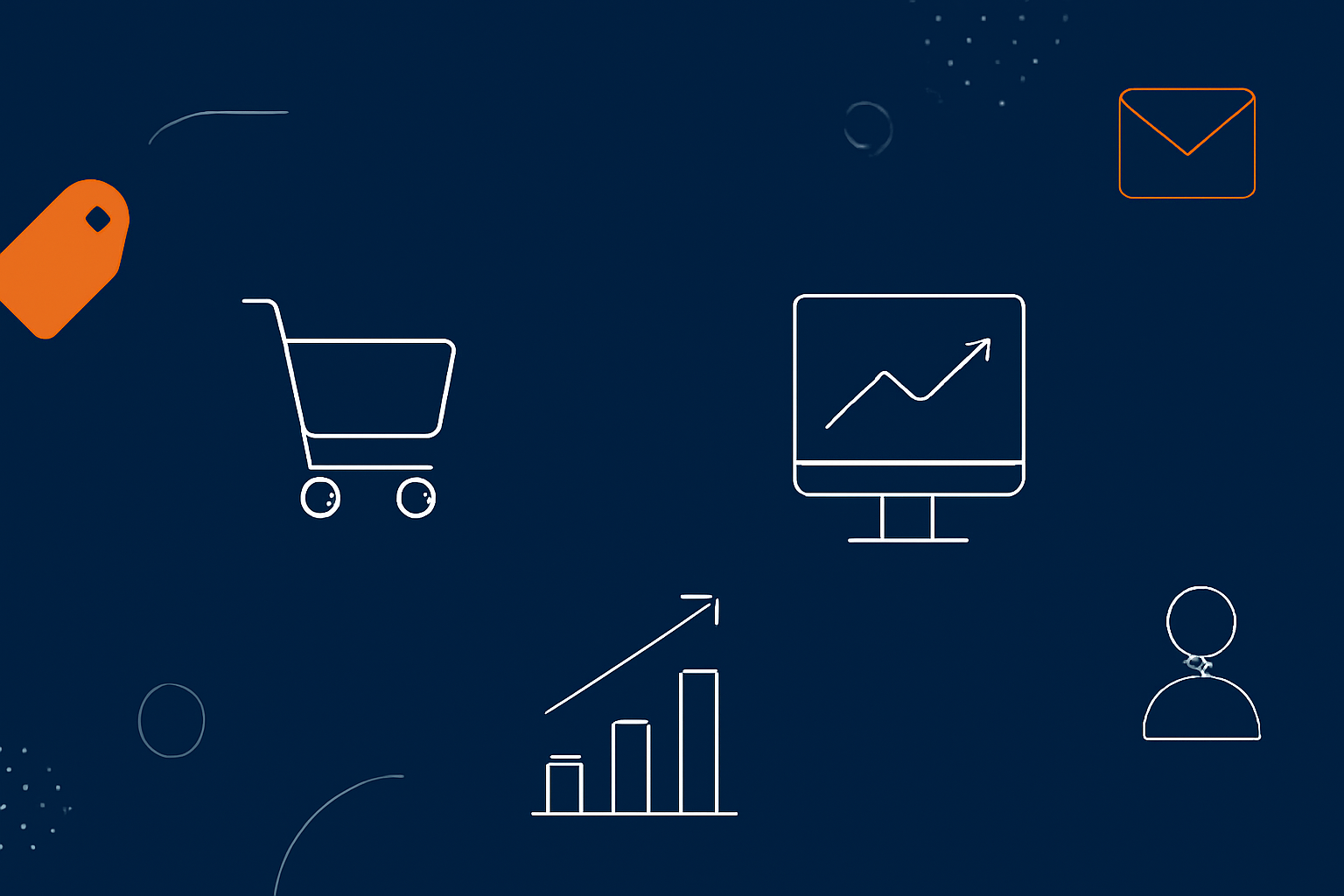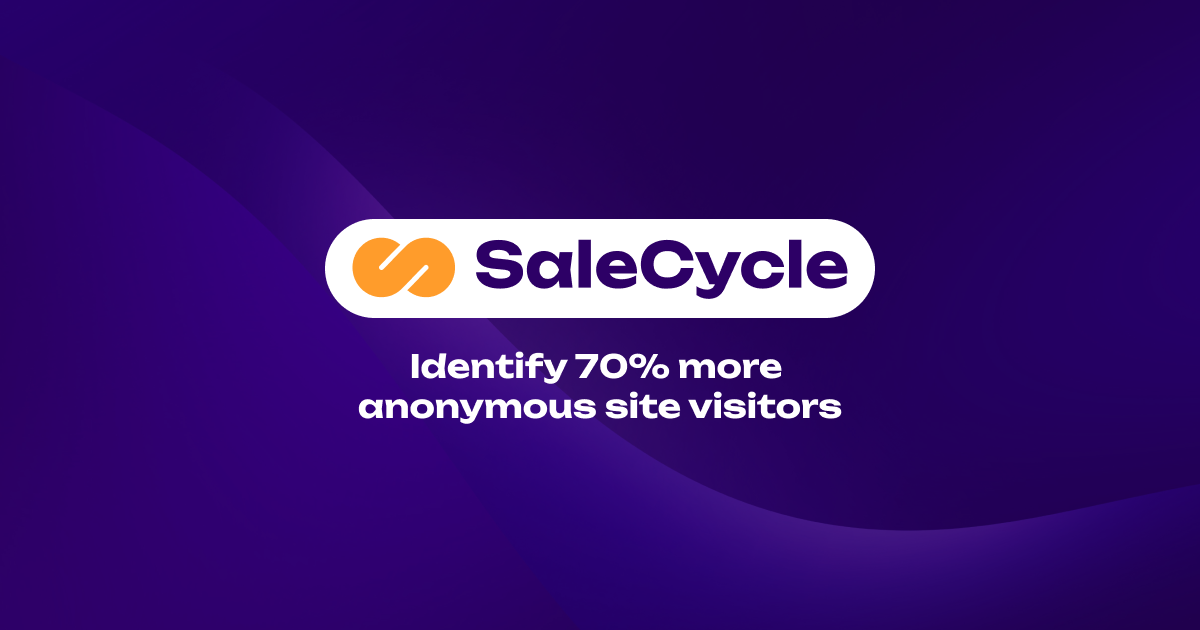


@kevin
Kevin Le Guyader is the Head of Marketing at SaleCycle. He is passionate about creating impactful marketing strategies. His work focuses on understanding online shopping behavior, leveraging data-driven insights, and applying innovative activation technologies. The goal is to drive customer engagement and deliver sustainable business growth. With expertise in online behavior and data-driven creativity, he helps brands connect with their audience and turn engagement into measurable growth.
6 Posts
2 Photos
0 Videos
-
Cart abandonment continues to challenge retailers, and as online shopping expands, keeping customers engaged through to checkout has become increasingly difficult. Yet this persistent problem does not mean retailers are without control.
The key lies in taking action rather than accepting the loss. Businesses that view cart abandonment as an opportunity rather than an inevitability are already seeing measurable improvements. Tools such as exit-intent pop-ups, tailored remarketing messages and personalised recovery emails are helping to bring customers back while restoring confidence in the buying process.
Advances in technology are also changing the game. Identity resolution now enables brands to recognise up to 70 per cent of anonymous visitors, allowing them to reconnect with potential customers who might otherwise be lost. Combined with multi-channel recovery techniques through email, SMS and targeted advertising, retailers can reach hesitant shoppers on the platforms they use most.
In 2025, reducing cart abandonment is about understanding customer behaviour and removing every possible barrier to purchase. Clear pricing, simplified one-click checkouts and flexible payment options have become essential features of a seamless shopping experience rather than optional extras. Each of these improvements helps customers feel in control, valued and secure.
Our latest insights reveal how leading retailers are turning the challenge of cart abandonment into a powerful strategy for revenue recovery. By analysing shopper intent, refining checkout journeys and building consistent trust at every touchpoint, businesses can transform lost sales into lasting relationships.
Although billions are still lost to cart abandonment each year, forward-thinking retailers are proving that those sales are not gone for good. With the right approach, what begins as a missed opportunity can quickly become a moment of connection and a completed purchase.
https://www.salecycle.com/blog/cart-abandonment-rate-in-uk-and-european-ecommerce-causes-impacts-and-solutions
#cart_abandonment #cart_abandonment_rateCart abandonment continues to challenge retailers, and as online shopping expands, keeping customers engaged through to checkout has become increasingly difficult. Yet this persistent problem does not mean retailers are without control. The key lies in taking action rather than accepting the loss. Businesses that view cart abandonment as an opportunity rather than an inevitability are already seeing measurable improvements. Tools such as exit-intent pop-ups, tailored remarketing messages and personalised recovery emails are helping to bring customers back while restoring confidence in the buying process. Advances in technology are also changing the game. Identity resolution now enables brands to recognise up to 70 per cent of anonymous visitors, allowing them to reconnect with potential customers who might otherwise be lost. Combined with multi-channel recovery techniques through email, SMS and targeted advertising, retailers can reach hesitant shoppers on the platforms they use most. In 2025, reducing cart abandonment is about understanding customer behaviour and removing every possible barrier to purchase. Clear pricing, simplified one-click checkouts and flexible payment options have become essential features of a seamless shopping experience rather than optional extras. Each of these improvements helps customers feel in control, valued and secure. Our latest insights reveal how leading retailers are turning the challenge of cart abandonment into a powerful strategy for revenue recovery. By analysing shopper intent, refining checkout journeys and building consistent trust at every touchpoint, businesses can transform lost sales into lasting relationships. Although billions are still lost to cart abandonment each year, forward-thinking retailers are proving that those sales are not gone for good. With the right approach, what begins as a missed opportunity can quickly become a moment of connection and a completed purchase. https://www.salecycle.com/blog/cart-abandonment-rate-in-uk-and-european-ecommerce-causes-impacts-and-solutions #cart_abandonment #cart_abandonment_rate0 Comments ·0 Shares ·70 Views ·0 Reviews -
Did you know UK retailers lose an astonishing £38 billion every year to abandoned online checkouts? That’s nearly a quarter of all online transactions ending just before the final click.
It sounds alarming, but it also highlights a major opportunity. Most of those shoppers didn’t leave because they changed their minds they were interrupted, got distracted, or hesitated at the last second. In other words, they still want to buy. They just need the right nudge to return and complete their purchase.
That’s where abandoned basket emails make all the difference.
Unlike broad marketing campaigns that target everyone, these messages are laser-focused on customers who’ve already added products to their cart. They’re warm leads people who’ve shown genuine interest and are only one step away from converting.
And the results speak for themselves:
54% open rate more than double that of standard marketing emails.
25% conversion rate one in four recipients return to finish their purchase.
40% cheaper than traditional retargeting ads.
For Shopify, WooCommerce, and other eCommerce retailers, this approach offers one of the quickest and most affordable ways to recover lost sales. With a well-timed sequence of just three emails, it’s possible to re-engage shoppers, rebuild trust, and drive them back to checkout without resorting to heavy discounts or spam tactics.
The latest blog, “The Essential Guide to Recovering Lost Sales in 2025,” explores how UK retailers can use data-driven timing, persuasive copy, and subtle psychological cues to bring customers back. It’s a practical framework that turns hesitation into action and lost baskets into completed purchases.
If your business is missing out on sales at the final step, this guide is the blueprint for turning abandoned checkouts into a consistent source of recovered revenue.
Read “The Essential Guide to Recovering Lost Sales in 2025” to discover how a smarter email strategy can transform missed opportunities into measurable growth.
https://www.salecycle.com/blog/abandoned-basket-emails-uk-europe-guide
#abandoned_basket_email #abandoned_basket #recover_lost_salesDid you know UK retailers lose an astonishing £38 billion every year to abandoned online checkouts? That’s nearly a quarter of all online transactions ending just before the final click. It sounds alarming, but it also highlights a major opportunity. Most of those shoppers didn’t leave because they changed their minds they were interrupted, got distracted, or hesitated at the last second. In other words, they still want to buy. They just need the right nudge to return and complete their purchase. That’s where abandoned basket emails make all the difference. Unlike broad marketing campaigns that target everyone, these messages are laser-focused on customers who’ve already added products to their cart. They’re warm leads people who’ve shown genuine interest and are only one step away from converting. And the results speak for themselves: 📬 54% open rate more than double that of standard marketing emails. 💳 25% conversion rate one in four recipients return to finish their purchase. 💰 40% cheaper than traditional retargeting ads. For Shopify, WooCommerce, and other eCommerce retailers, this approach offers one of the quickest and most affordable ways to recover lost sales. With a well-timed sequence of just three emails, it’s possible to re-engage shoppers, rebuild trust, and drive them back to checkout without resorting to heavy discounts or spam tactics. The latest blog, “The Essential Guide to Recovering Lost Sales in 2025,” explores how UK retailers can use data-driven timing, persuasive copy, and subtle psychological cues to bring customers back. It’s a practical framework that turns hesitation into action and lost baskets into completed purchases. If your business is missing out on sales at the final step, this guide is the blueprint for turning abandoned checkouts into a consistent source of recovered revenue. 👉 Read “The Essential Guide to Recovering Lost Sales in 2025” to discover how a smarter email strategy can transform missed opportunities into measurable growth. https://www.salecycle.com/blog/abandoned-basket-emails-uk-europe-guide #abandoned_basket_email #abandoned_basket #recover_lost_sales0 Comments ·0 Shares ·121 Views ·0 Reviews -
In today’s fast-moving digital marketplace, attracting visitors to your website is no longer enough. True success comes from understanding those visitors their intent, preferences, and the subtle signals that reveal what they’re really looking for.
The most successful eCommerce brands are no longer relying solely on traditional analytics or conversion data. Instead, they’re transforming anonymous web traffic into actionable insight. Every visit, scroll, and interaction tells a story and by interpreting these signals correctly, businesses can create seamless, personalised experiences that feel human and relevant, even before a visitor becomes a customer.
This evolution in customer understanding is being driven by sophisticated anonymous visitor identification technology. By analysing aggregated behavioural data such as browsing patterns, time on site, and engagement depth, businesses can predict user intent, refine content strategies, and enhance conversion pathways. Importantly, this is achieved while maintaining full compliance with privacy standards, ensuring that insight never comes at the expense of trust.
The future of eCommerce belongs to those who can balance technology, data, and empathy. Brands that harness intelligent visitor analytics will be able to anticipate customer needs, reduce friction, and build deeper connections through smarter, more meaningful engagement.
As visitor identification tools continue to evolve, the opportunity to turn insight into impact will only grow. Businesses that embrace this change now will lead the way in creating more intuitive, personalised, and profitable online experiences.
Understanding your visitors is no longer optional it’s essential.
Discover how advanced visitor analytics can help your business stay ahead of the curve:
https://www.salecycle.com/anonymous-website-visitor-identification-tracking
#anonymous_visitor_tracking #website_traffic_insights #conversion_rate_optimisationIn today’s fast-moving digital marketplace, attracting visitors to your website is no longer enough. True success comes from understanding those visitors their intent, preferences, and the subtle signals that reveal what they’re really looking for. The most successful eCommerce brands are no longer relying solely on traditional analytics or conversion data. Instead, they’re transforming anonymous web traffic into actionable insight. Every visit, scroll, and interaction tells a story and by interpreting these signals correctly, businesses can create seamless, personalised experiences that feel human and relevant, even before a visitor becomes a customer. This evolution in customer understanding is being driven by sophisticated anonymous visitor identification technology. By analysing aggregated behavioural data such as browsing patterns, time on site, and engagement depth, businesses can predict user intent, refine content strategies, and enhance conversion pathways. Importantly, this is achieved while maintaining full compliance with privacy standards, ensuring that insight never comes at the expense of trust. The future of eCommerce belongs to those who can balance technology, data, and empathy. Brands that harness intelligent visitor analytics will be able to anticipate customer needs, reduce friction, and build deeper connections through smarter, more meaningful engagement. As visitor identification tools continue to evolve, the opportunity to turn insight into impact will only grow. Businesses that embrace this change now will lead the way in creating more intuitive, personalised, and profitable online experiences. Understanding your visitors is no longer optional it’s essential. 👉 Discover how advanced visitor analytics can help your business stay ahead of the curve: https://www.salecycle.com/anonymous-website-visitor-identification-tracking #anonymous_visitor_tracking #website_traffic_insights #conversion_rate_optimisation0 Comments ·0 Shares ·69 Views ·0 Reviews -
When a shopper clicks away without completing their purchase, many retailers assume the opportunity has been lost. In reality, this moment isn’t the end of the journey at all it’s the beginning of cart recovery. But what does that actually involve?
Abandoned cart recovery isn’t about pestering customers with endless reminders. Instead, it’s about understanding the reasons behind the abandonment and applying intelligent re-engagement strategies to guide shoppers back to the checkout. Successful recovery typically unfolds across three key stages:
Detect abandonment — identifying when and where a potential purchase has been left behind.
Re-engage with personalised messaging — delivering timely, relevant content that speaks directly to the customer’s needs.
Optimise for conversion — refining the experience to make it as easy and compelling as possible for the shopper to complete their order.
When executed well, recovery campaigns consistently achieve conversion rates of 15–25%, with leading retailers pushing beyond this to reach 35%. The difference lies in how effectively businesses harness data, timing, and personalisation. These three elements combine to transform an abandoned basket from a lost sale into a reclaimed opportunity.
Today’s most effective strategies go far beyond basic email reminders. From identity resolution that recognises customers across multiple devices, to AI-driven segmentation that tailors outreach to individual behaviour, recovery has become a sophisticated tool for boosting revenue. More importantly, it’s not just about securing a single purchase it’s about building lasting relationships that drive repeat sales and long-term loyalty.
Abandonment doesn’t have to mean loss. Viewed through the right lens, it signals the start of a second chance. Our latest blog explores how forward-thinking retailers are turning hesitation into conversion. If you’re ready to stop writing off abandoned baskets and start seeing them as opportunities, this is where to begin.
https://www.salecycle.com/blog/abandoned-cart-recovery-guide-uk-eu-retail
#cartrecovery #abandonmentcartrecovery #cartabandonmentsolutions #ukretailecommerceWhen a shopper clicks away without completing their purchase, many retailers assume the opportunity has been lost. In reality, this moment isn’t the end of the journey at all it’s the beginning of cart recovery. But what does that actually involve? Abandoned cart recovery isn’t about pestering customers with endless reminders. Instead, it’s about understanding the reasons behind the abandonment and applying intelligent re-engagement strategies to guide shoppers back to the checkout. Successful recovery typically unfolds across three key stages: Detect abandonment — identifying when and where a potential purchase has been left behind. Re-engage with personalised messaging — delivering timely, relevant content that speaks directly to the customer’s needs. Optimise for conversion — refining the experience to make it as easy and compelling as possible for the shopper to complete their order. When executed well, recovery campaigns consistently achieve conversion rates of 15–25%, with leading retailers pushing beyond this to reach 35%. The difference lies in how effectively businesses harness data, timing, and personalisation. These three elements combine to transform an abandoned basket from a lost sale into a reclaimed opportunity. Today’s most effective strategies go far beyond basic email reminders. From identity resolution that recognises customers across multiple devices, to AI-driven segmentation that tailors outreach to individual behaviour, recovery has become a sophisticated tool for boosting revenue. More importantly, it’s not just about securing a single purchase it’s about building lasting relationships that drive repeat sales and long-term loyalty. Abandonment doesn’t have to mean loss. Viewed through the right lens, it signals the start of a second chance. Our latest blog explores how forward-thinking retailers are turning hesitation into conversion. If you’re ready to stop writing off abandoned baskets and start seeing them as opportunities, this is where to begin. https://www.salecycle.com/blog/abandoned-cart-recovery-guide-uk-eu-retail #cartrecovery #abandonmentcartrecovery #cartabandonmentsolutions #ukretailecommerce0 Comments ·0 Shares ·243 Views ·0 Reviews
More Stories








